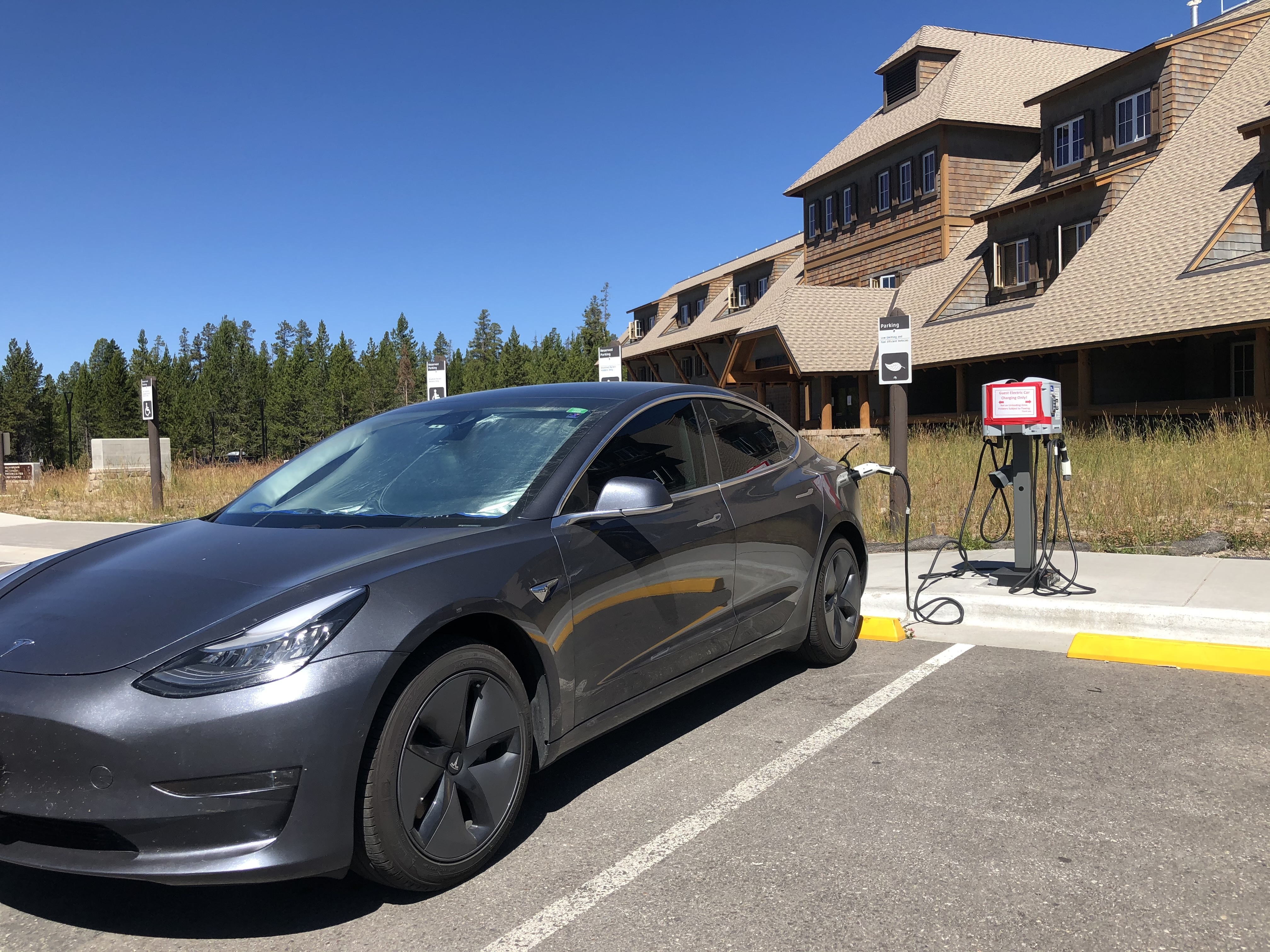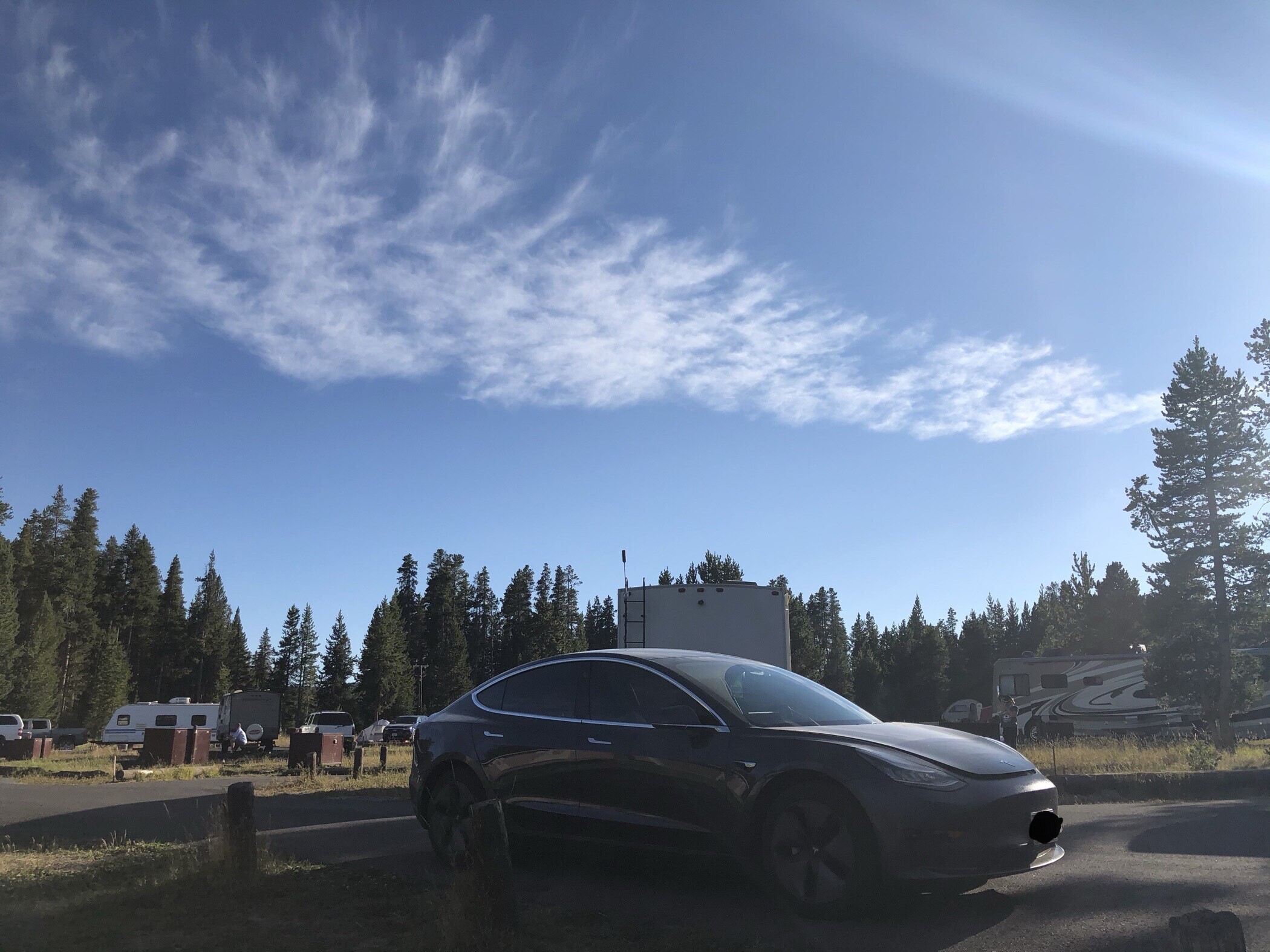Follow the Yellowstone Road: Driving Electric from Seattle to Yellowstone National Park
By: Eric Huang
Summertime and the open road. Two great things that go great together. With so many traditional summer activities limited or on hold due to the pandemic, one, visiting national parks remained an irresistible opportunity. 
I’d planned a vacation in August not expecting much of the world to be in a lockdown of one form or another. So with the time off work already requested, my partner and I decided to head out on a road trip for the ages.
We’d both traveled cross country previously when we moved to the Pacific Northwest from the Midwest. But this time, we wanted to try something different. We wanted to do a fully electric road-trip from Seattle, Washington to the legendary Yellowstone National Park.
Electric Vehicles (EVs) are highly efficient in city driving and mixed driving conditions with stop-and-go traffic. Thanks to the "regenerative braking" the electric motor acts as part of the braking system to stop the vehicle and recover some of the kinetic energy of the vehicle and storing the energy back into the battery. However, when it comes to highway road trips, EV doesn't have the same opportunity to stop and recover the energy as it would in city driving. Depending on how you drive and use your EV’s features, your mileage range can vary.
Ready to test our Tesla’s range and seeking an adventure, we set off in the morning with a 99% charge in our 2019 Tesla Model 3 Standard Range Plus with a range of 240 miles. We used the car’s onboard trip computer to plan a route for me from Seattle to the West Yellowstone entrance of the national park. We headed straight east on Interstate 90 (I-90) until we reached state road 287 in Montana before reaching West Yellowstone, MT.
Here are my charging stops from Seattle to Yellowstone, while starting off with 100% charge: (For a detailed video of our charging stops on Day 1)
- Seattle → Cle Elum, WA: (100% - > 48%, 89-mile) We stopped at this Supercharger, which is only 89 miles from Seattle, for a very short restroom stop. We arrived with about 48%, and we charged for about 5 minutes while we paid a visit to a gorgeous little coffee shop and discovered other fast-charging stations right next to the Tesla Superchargers.
- Cle Elum → Moses Lake, WA: (64% - > 19%, 90-mile) After another drive for about 90 miles, (Moses Lake is 180 miles away from Seattle), we arrived at the second stop of our trip where we stopped with 18% charge (we charged at Cle Elum) and charged for about 20 minutes to reach an 80% charge so we can conquer the next leg of the trip to Spokane. The Moses Lake charging station is located at a shopping plaza with supermarkets and restaurants, perfect for stretching your legs and grabbing some snacks on the go!
- Moses Lake → Spokane, WA: (80% - > 21%, 97-mile) After driving for another 97 miles, we arrived at Spokane around noon with a 22% charge. I must admit the trip computer onboard gave me a great deal of security and I did not experience any range anxiety thus far driving at 70 mph on I-90. We arrived with the amount of charge as predicted by the onboard computer, and the error is mostly within 1~2%. The Spokane charging station had plenty of restaurants for lunch and the charging was almost done by the time with finished our lunch. In total, it took about 25-min to charge the car up to about 90% charge.
- Spokane, WA → Superior, MT: (85% - > 7%, 147-mile) After almost two and a half hours of driving, with a mild food coma, we arrived at the Superior Supercharger with 7% of charge. It was exactly what the onboard computer “warned” me about, but when the battery icon started to turn yellow when it’s below 20%, I was mildly worried. I trust the computer’s calculation because I know it takes into account of various factors such as elevation change, the speed limit of the highway, and driving habits. We charged for about 20-min and resumed our journey. A little bit of range anxiety but we got through it!
- Superior → Missoula, MT: (61% - > 29%, 55-mile) Our next stop was Missoula, MT, where we charged for about 20-min, while we grabbed a drink at Starbucks nearby. The Supercharger was located next to a Best Western Hotel and co-located with gas stations and stores. We resumed our trip soon after to head for our first destination: Butte, MT.
- Missoula → Butte, MT: (85% - > 9%, 123-mile at 75~80mph) After about 1.5-hr drive, we arrived at our hotel for the night at Butte, MT, which was only 123 miles from our previous stop, yet it cost us almost 80 % of the energy due to the 80 mph speed limit on the I-5 highway. We decide to leverage the hotel’s light post, which has 110v outlets to charge overnight (level 1 charging), and then use the Supercharger in the morning so we have enough range to reach West Yellowstone in a single charge, which will be a 145-mile trip.
- Butte → West Yellowstone, MT: (97% - > 19%, 145-mile) We set off with almost full charge at 97% from Butte, MT, and we drove for about 2.5-hr before reaching the Supercharger at W. Yellowstone with 19% left. We stopped to grab lunch and charged to 98%, which took about 30-min before entering the park. If you want to figure out where you can find charging inside of the Yellowstone National Park, the app Plugshare, the National Park Services’ own app, and this NPS webpage will be very helpful. Remember to print or download the offline map before entering the park since there will be very limited cellular service inside the park.
After entering Yellowstone National Park, we visited the famous "Old Faithful" to catch the geyser while also exploring the cabin area’s charging station. With about 85% charge left on my car after the 32-mile trip from the Supercharger, I found the charging station hidden in the cabin area of the lodge. One of the two charging spaces was occupied by a Model 3 from Washington state (glad to see another electric vehicle made it from WA), but I decided not to charge here since the other station was located at an accessibility parking space and the fact that I had 85% charge left.
We parked the car, checked the estimated time for Old Faithful's show (Old Faithful is a geyser that has a regular activity with almost fixed intervals), and went for a hike. Returning from the hike, we found ourselves a pair of seats at the bench around the Old Faithful, and like clockwork, Old Faithful gave the most amazing show of geyser eruption I've ever seen.
After seeing the great show, we set off to our campground at Bridge Bay, about 37-mile away from Old Faithful. We arrived with about 70% charge remaining. The tough question was deciding whether to charge. Our plan was to camp in the car and try to take advantage of the camping mode of the Tesla vehicles, which keeps the climate control over the night so we won't freeze during the 35 F degree nights in Yellowstone. According to our prior experience of camping mode in the Washington Olympic National Park (see our Youtube video), one night of camping mode at 68 F (outside temp ~40 F) will cost us about 10kWh of energy. So we will spend about 20% of our charge (the Tesla Model 3 Standard Range Plus has a battery pack with 50kWh available capacity) for tonight. Thankfully, the campgrounds at Bridge Bay were close to the Yellowstone Lake Hotel, which has a NEMA 14-50 plug near the hotel, and two Level 2 charging stations near the Employee lodge (you can find this station on the Yellowstone official app). We parked our car and returned to our camp to prepare for dinner. Day.2
The next day, we went to a variety of locations, including Mud Volcano, Hayden Valley (to see bison!), The Great Canyon of the Yellowstone National Park, and the beautiful waterfalls of the Yellowstone River. Pro tip: there are two Level 2 charging stations at the Rhyolite Lodge of the Canyon Village. It's reserved for EV charging only and you can use it to top off if you need the charge to complete your trip!
Once night fell, we went to the brink of the Yellowstone Lake for some stargazing. Thanks to the absence of the moon, we were able to see the most beautiful night sky filled with all the stars the universe has to offer along with a handful of shooting stars. View day two's vlog here!
Day 3: After packing up our campsite, we headed to our final destinations, the Norris Geyser Basin and Mammoth Hot Spring in the north of the park. Mammoth is a well-furnished busy town, and there are two Level 2 charging stations near the Mammoth Hot Spring Hotel. We charged our car there while out for a hike around the Mammoth Hot Spring. On the way back, we began our trip with about 80% charge, and we stopped in Bozeman, MT for a supercharger to quickly top-off before we arrived at our resting stop Butte for a night of rest.
After resting one night, it was time to head home. We set off with a 90% charge from our hotel and followed the trip planner onboard for stops, which essentially replicated the stops from our way to Butte. After a total of 13 hours on the road and some traffic on I-90, we made it home.
We were able to make a trip, totaling more than 1,700 miles, entirely electric! This is a great testimony to the fact that EVs have arrived at a point of equivalence to the internal combustion engine vehicles. Yes, we stopped more than our friend's Mazda 6 did, but we were also more relaxed thanks to the Autopilot feature that keeps the car in the lane and adjusts the speed of the car according to traffic. More importantly, we had zero tailpipe emissions of any kind.

If you are taking an EV with CCS/Chademo plug, here are some of the suggestions for charging stops:
-
Seattle - Cle Elum ~ 90 miles
-
Cle Elum ~ Ellensburg ~ 25 miles
-
Ellensburg ~ Moses Lake ~ 70 miles
-
Moses Lake ~ Ritzville ~ 48 miles
-
Ritzville ~ Spokane ~ 50~55 miles
-
Spokane ~ Smelterville, ID ~ 75 miles
-
Smelterville, ID ~ Missoula ~ 130 miles (with high elevation challenge )
-
Missoula ~ Butte, MT ~120 miles (80mpg speed limit)
-
Butte, MT ~ Yellowstone Harley-Davidson ~ 78.7 miles, but only a 25kW CCS charger, no other CCS/Chademo in the area

